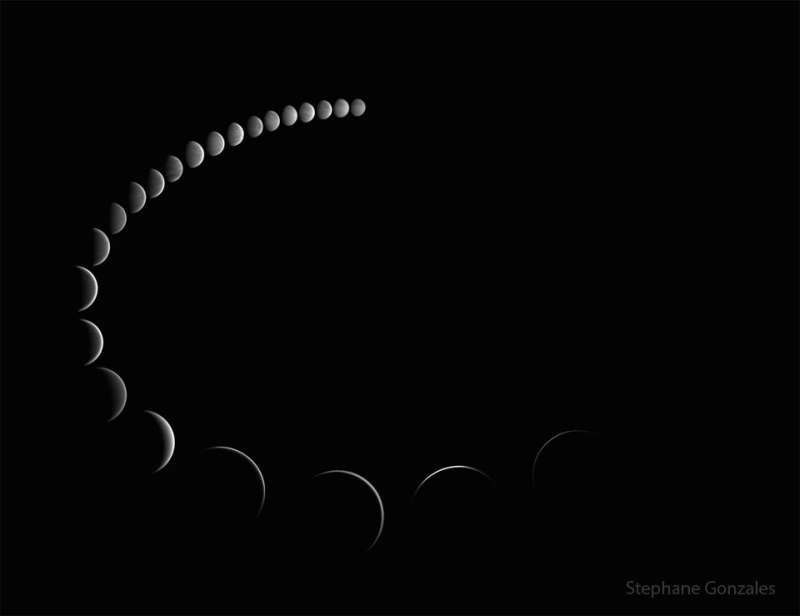Credit & Copyright: Stcphane Gonzales
Explanation:
Venus goes through
phases.
Just like our Moon,
Venus
can appear as a full circular disk, a thin
crescent, or anything in between.
Venus, frequently the brightest object in the
post-sunset or
pre-sunrise sky, appears so small,
however, that it usually requires binoculars or a small telescope to clearly see
its current phase.
The featured time-lapse sequence was taken over the course of six months in 2015
from Surgcres,
Charente-Maritime,
France,
and shows not only how Venus changes phase, but changes angular size as well.
When
Venus is on the far side of the Sun from the Earth,
it appears angularly smallest and nearest to full phase, while when
Venus and Earth are on the same side of the Sun,
Venus
appears larger, but as a crescent.
This
month Venus rises before dawn in
waxing
gibbous
phases.
Free APOD Lecture:
January 9, 2024 to the Amateur Astronomers of Association of New York
1999 2000 2001 2002 2003 2004 2005 2006 2007 2008 2009 2010 2011 2012 2013 2014 2015 2016 2017 2018 2019 2020 2021 2022 2023 2024 2025 |
Yanvar' Fevral' Mart Aprel' Mai Iyun' Iyul' Avgust Sentyabr' Oktyabr' Noyabr' Dekabr' |
NASA Web Site Statements, Warnings, and Disclaimers
NASA Official: Jay Norris. Specific rights apply.
A service of: LHEA at NASA / GSFC
& Michigan Tech. U.
|
Publikacii s klyuchevymi slovami:
Venus - phases - Venera - Faza Luny ili planet
Publikacii so slovami: Venus - phases - Venera - Faza Luny ili planet | |
Sm. takzhe:
Vse publikacii na tu zhe temu >> | |
